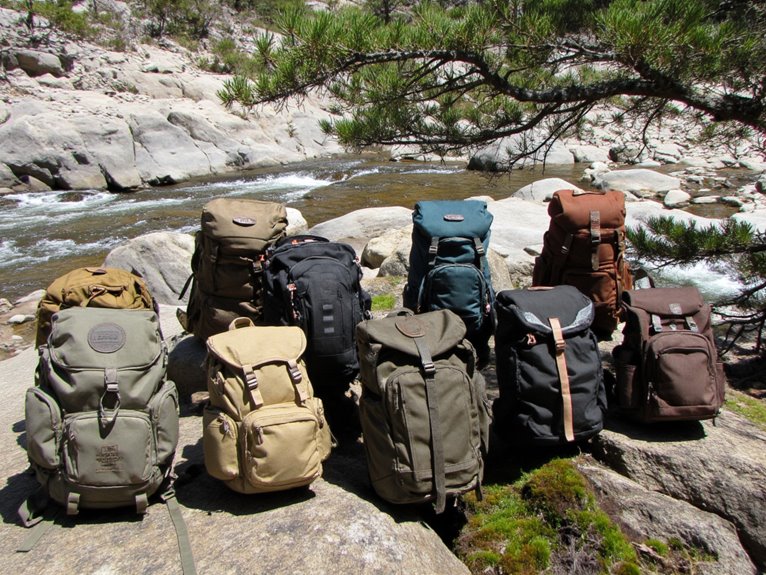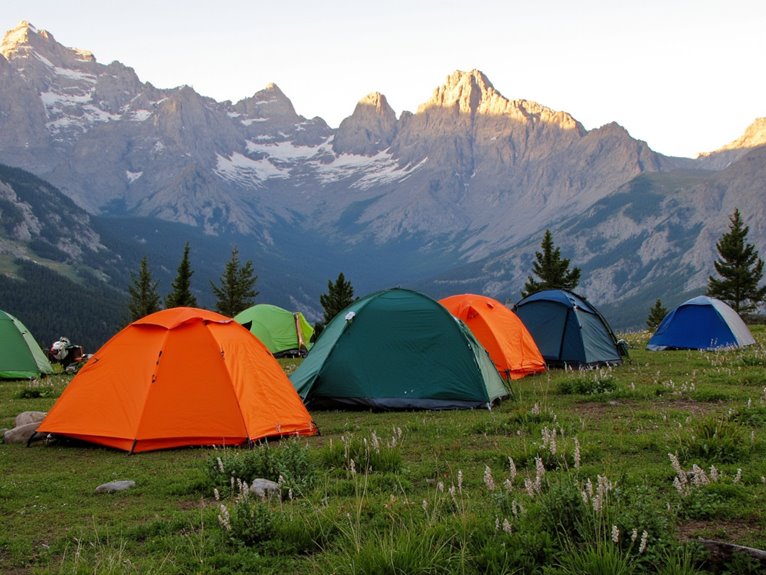Mont Blanc Hike: Comparing Elevation vs AV1 for an Unforgettable Adventure
Setting off on the Mont Blanc hike is an exhilarating journey of challenging elevations. The Tour du Mont Blanc challenges hikers with 30,350 feet conquered over 102 miles, showcasing magnificent views and hardships. In contrast, the Alta Via 1 offers a 74-mile trek with 23,050 feet ascent and 26,325 descent, providing a more balanced experience. The Alps call for an unforgettable adventure blending endurance and breathtaking landscapes. The choice between these routes depends on your appetite for elevation and scenic rewards. Make your decision wisely for an adventure that will push your limits and present you with unforgettable memories.
We are supported by our audience. When you purchase through links on our site, we may earn an affiliate commission, at no extra cost for you. Learn more. Last update on 28th December 2025 / Images from Amazon Product Advertising API.
Elevation Changes on Mont Blanc Hike
Enthusiastic trekkers setting out on the Mont Blanc escapade are faced with substantial elevation changes that characterize the journey’s demanding yet gratifying essence. The Tour du Mont Blanc (TMB) presents a formidable challenge with a total elevation gain and descent of 30,350 feet over 102 miles, leading to frequent ups and downs as stages conclude in valley floors. The Alta Via 1 (AV1), spanning 74 miles, offers a different but equally exhilarating experience with 23,050 feet of elevation gain and 26,325 feet of descent.
When considering the Mont Blanc Hike, one must factor in their preferences for uphill and downhill hiking. The TMB’s elevation changes test one’s endurance and offer breathtaking views, while the AV1 provides a more structured uphill and downhill balance. Additionally, trekkers on the TMB have the option to stay in normal hotels, which can be a welcome comfort after a challenging day of hiking. In contrast, those on the AV1 experience hut accommodations, immersing themselves more deeply in the natural surroundings and simplifying logistics for a more rugged adventure.
AV1 Route Overview
Traversing through the captivating Alta Via 1 (AV1) trail involves immersing oneself in a 74-mile journey filled with stunning scenery and cultural experiences. The AV1 trail offers much more than just a hike; it provides a deep connection with nature and an opportunity to discover the beauty of the Italian Dolomites. Here is an overview of what you can anticipate on the AV1 route:
- Rifugios: Along the AV1 trail, hikers will come across charming rifugios offering warm hospitality and a chance to experience the local culture.
- Food and Wine: Delight in delicious food and exceptional wine experiences that are renowned for being twice as good compared to the Tour du Mont Blanc.
- Solitude: Experience moments of solitude on the AV1 trail, allowing you to immerse yourself in the tranquility of nature and find inner peace.
- Connection with Nature: The AV1 trail provides ample opportunities to connect with nature, from breathtaking landscapes to serene moments that rejuvenate the soul.
- Scenery: Marvel at the epic and varied scenery that the AV1 trail has to offer, ranging from lush valleys to rugged mountain peaks, creating a feast for the eyes.
Embarking on the AV1 journey promises not only a physically rewarding experience but also a deeply enriching adventure that touches all the senses.
Terrain Comparison: Steepness & Challenges
The terrain on both the Tour du Mont Blanc Hike and Alta Via 1 trails presents distinct challenges in steepness and rugged obstacles. The Tour du Mont Blanc (TMB) stands out with its significant elevation changes of 30,350 feet up and down, making it a more physically demanding trail compared to the Alta Via 1 with 23,050 feet up and 26,325 feet down. TMB features stages that often end in valley floors, resulting in more dramatic hiking experiences with steep ascents and descents that can test your endurance and strength.
On the other hand, the Alta Via 1 trail offers its own set of challenges with varying terrain and steep sections, providing hikers with epic and diverse scenery throughout the journey. While TMB includes more encounters with glaciers and villages along the trail, offering opportunities to rest and experience local culture, Alta Via 1 presents a different kind of allure with its rugged beauty and remote paths.
When considering these factors, hikers must weigh their preferences for challenging terrain and decide between the Mont Blanc Hike and AV1 for an unforgettable adventure. Whether you seek the thrill of dramatic elevation changes on TMB or the rugged charm of Alta Via 1, both trails promise unforgettable experiences amidst breathtaking landscapes and cozy accommodations in picturesque villages along the way.
Scenic Highlights Along the Trail
Scenic beauty unfurls like a vibrant tapestry along both the Tour du Mont Blanc (TMB) and Alta Via 1 (AV1) trails, inviting hikers into a world of awe-inspiring landscapes and natural wonders. The Mont Blanc Hike offers a variety of scenic highlights that enrich the overall hiking experience.
- Glaciers and Dramatic Terrain: TMB treats hikers to breathtaking glacier views and challenging yet rewarding up and downs, adding a sense of adventure to the journey.
- Epic Scenery and Warm Hospitality: AV1 boasts diverse landscapes along with welcoming rifugio hosts, delicious food, and superior wine experiences, creating a perfect blend of nature and culture.
- Cultural Immersion: TMB’s route is dotted with charming villages and towns, providing ample opportunities for cultural immersion and exploration, enriching the hiking experience.
- Paragliding Thrills: Adventure seekers can heighten their Mont Blanc Hike by indulging in paragliding, offering a unique perspective of the stunning surroundings and an adrenaline rush.
- Solitude in Nature: AV1 offers more seclusion on the trail, allowing hikers to relish moments of tranquility and deep connection with the natural world, making it an ideal escape for those seeking peace and serenity.
These scenic highlights not only make the Mont Blanc Hike a visually stunning adventure but also contribute to a holistic and enriching outdoor experience, blending nature, culture, and adventure seamlessly.
Gear Essentials for a Safe Journey
As I start on the Mont Blanc hike, making sure the right gear is packed becomes critical for a safe and successful journey through the stunning landscapes. Sturdy hiking boots are essential for traversing the rugged terrain, providing stability and support throughout the trek. Weather-appropriate clothing is a must, as temperatures can vary greatly, especially at high altitudes. Layering up with moisture-wicking fabrics will help regulate body temperature and protect against changing weather conditions.
In preparation for overnight stays on the trail, lightweight camping equipment such as a tent, sleeping bag, and camping stove are indispensable. These items are essential for a comfortable rest after a day of hiking. To ensure proper orientation along the trail, packing tools like a map, compass, and headlamp is critical. These items will help me stay on track even in low light conditions.
Sun protection is paramount when trekking at high altitudes. Packing sunscreen, lip balm, and sunglasses will shield me against the harsh UV rays, preventing sunburn and eye damage. Additionally, a well-equipped first aid kit is a non-negotiable safety measure, providing essential supplies for any minor injuries that may occur. Managing the weight of my gear is key to avoiding unnecessary strain, so I will carefully consider each item to maintain a manageable load and enjoy a smoother hiking experience.
Tips for Booking Accommodations & Campsites
Starting the Mont Blanc hike requires planning accommodation reservations and selecting campsites for a smooth trekking adventure. When booking accommodations and campsites for the Mont Blanc trek, there are several key tips to keep in mind:
- Make reservations early: Accommodations along the Mont Blanc trails, such as mountain huts, hotels, and campgrounds, can fill up quickly, especially during peak season. Booking in advance guarantees you have a place to stay each night.
- Consider campgrounds: Campsites along the route provide basic amenities like toilets, showers, and sometimes food supplies. They offer a more immersive outdoor experience and can be a cost-effective option.
- Carry a lightweight tent: Having a lightweight tent with you provides flexibility in case campsites are full or if you prefer a more independent camping experience under the stars.
- Check for water sources: While most campsites have water sources available, it’s wise to treat the water before drinking to avoid any health issues during your hike.
- Be prepared for peak season: During peak season, the demand for accommodations and campsites is high. By planning ahead and being flexible with your options, you can guarantee a comfortable and enjoyable trekking experience on the Mont Blanc hike.



